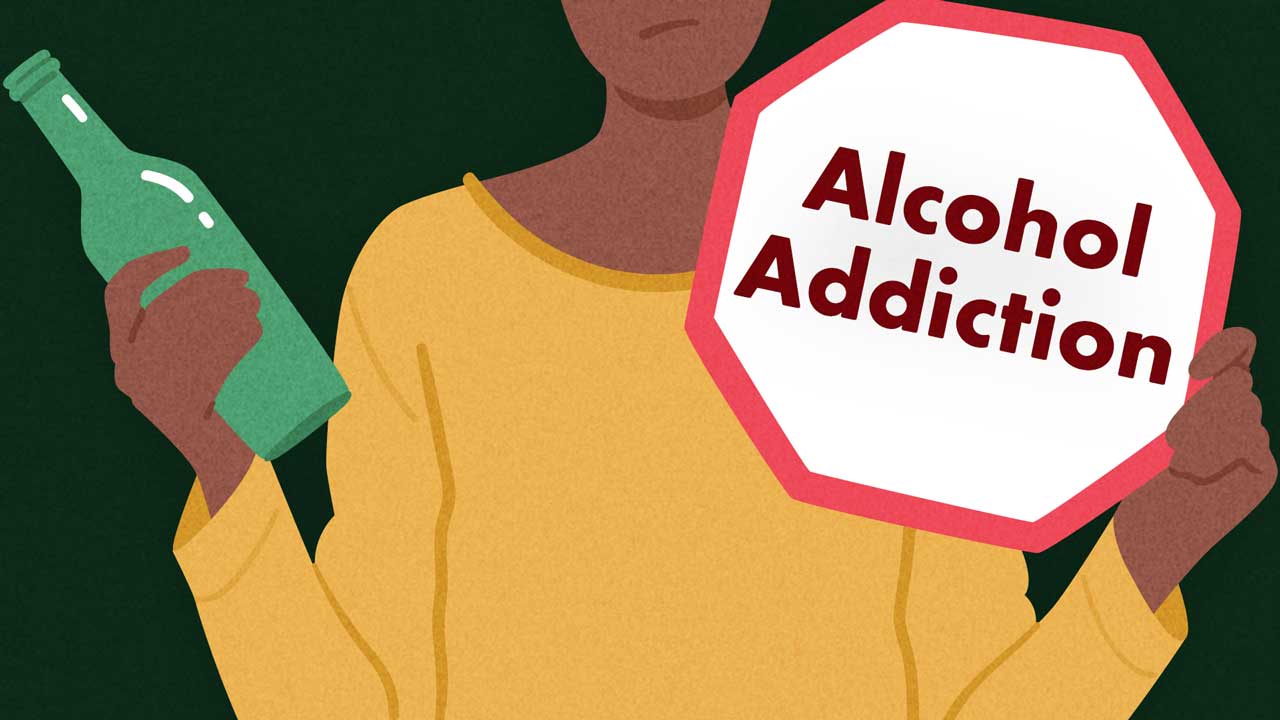The majority of Australians drink alcohol - approximately 77% of Australians over the age of 14 have consumed alcohol within the past 12 months (AIHW 2024a).
Drinking is associated with a wide range of social and cultural activities in Australia and is often actively encouraged. Alcohol generally plays a prominent role in occasions such as celebrations, sporting events, meals, clubbing and house parties. It can be viewed as ‘un-Australian’ to turn down a drink. Our heavy drinking culture dates back as far as colonisation - for a period of time, convicts were paid partially in rum (Moodie 2013).
When alcohol is absorbed into the bloodstream, short-term effects on the brain, such as a sense of relaxation and reduced inhibition, can be seen within about five minutes (This can vary from person to person, depending on their body mass and state of health) (Drug Info 2024). Consumed in excess, however, alcohol consumption can quickly lead to nausea, vomiting, loss of consciousness and even death (DoHaAC 2024).

Alcohol Addiction
Alcohol addiction refers to a physical dependence on alcohol. This is a serious medical issue that can have permanent consequences, such as brain damage and an increased risk of cancer and cardiovascular disease (ReachOut 2024).
To have an addiction is to have a dependence on a substance or activity. As opposed to someone who simply wants something, a person with an addiction will have physical cravings for the substance they’re addicted to (ReachOut 2024).
Alcohol in Australia
In 43% of drug treatment episodes in 2022-23, alcohol was the primary drug of concern - making it the most commonly treated drug in Australia (AIHW 2024a).
Alcohol is also the only drug where the approval of regular use (by an adult) is higher than disapproval (46% approve; 22% disapprove) (AIHW 2019).
There were 1,667 alcohol-induced deaths recorded in 2023 (ABS 2024).
Alcohol Use Disorder as Defined by the DSM-5
In 2013, the DSM-5 made changes to the categorisation of alcohol use disorder. DSM-5 now integrates the two DSM-IV disorders, alcohol abuse and alcohol dependence, into a single disorder called alcohol use disorder (AUD) including mild, moderate and severe sub-classifications (NIAAA 2021).
The 11 Symptoms of Alcohol Use Disorder as Listed in the DSM-V
- Alcohol is consumed in large amounts or over a longer period than was initially intended.
- There is a persistent desire or unsuccessful efforts to cut down or control drinking.
- A lot of time is spent drinking or recovering from the effects of alcohol.
- A person wants a drink so badly they cannot think of anything else.
- They find that drinking or being sick from drinking often interferes with taking care of home or family, or causes job or school problems.
- They continue to drink even though it is causing trouble with family or friends.
- They have given up on or cut back activities that were important or interesting to them or gave them pleasure, in order to drink.
- More than once they have engaged in situations while or immediately after drinking that increased the chances of getting hurt (for example swimming, using machinery or having unsafe sex).
- They continue to drink even when it makes them feel depressed or anxious or adds to another health problem, or after having a memory blackout.
- They have to drink more than they previously did to get the intended effect or find that the usual number of drinks has much less effect than before.
- They experience withdrawal symptoms, such as trouble sleeping, shakiness, restlessness, nausea, sweating, a racing heart, seizures or sensing things that are not there.
(NIAAA 2021)
The presence of at least two of these symptoms indicates an alcohol use disorder. The presence of two to three is considered mild. Four to five is moderate, and six or more is severe (NIAAA 2021).

The Effects of Alcohol Consumption
Short-term
- Reduced inhibitions
- Relaxation
- Loss of alertness or coordination and reduced reaction rates
- Impaired memory and judgement
- Double or blurred vision
- Disturbed sleep patterns
- Disturbed sexual function
- Nausea, shakiness and vomiting.
(Drug Info 2024)
Long-term
- Brain damage and dementia
- Liver cirrhosis
- Oral, throat and breast cancers
- Forms of heart disease and stroke.
(Drug Info 2024)
High-risk Groups
Based on recent statistics, the following groups are at greater risk of forming a dependence on alcohol:
- Aboriginal and Torres Strait Islander people
- People with mental health conditions
- Older people
- Younger people.
(AIHW 2024b)
Which Types of Drinks Have the Highest Alcohol Content?
Some alcoholic drinks have a higher concentration of alcohol than others. In Australia:
- Beer contains 0.9% to 6% alcohol
- Wine contains 12% to 14%
- Fortified wines such as sherry and port contain 18% to 20%
- Spirits such as scotch, rum, vodka and bourbon contain 40% to 50%.
(Drug Info 2024)
This means that for the same volume of liquid, both wine and spirits will affect you faster than beer.
Withdrawal From Alcohol
Read: Drug and Alcohol Withdrawal: An Insight
Withdrawal from chronic alcohol use should be completed in line with medical advice and/or supervision due to the life-threatening nature of its effects.
The body goes through significant changes as prolonged and heavy alcohol use stops. This is known as alcohol withdrawal.
Symptoms of withdrawal from alcohol include:
- Trembling
- Sweating
- Nausea, vomiting, diarrhoea, reduced appetite
- Headaches
- Insomnia
- Anxiety.
(Drug Info 2024; SA Health 2024)

The effects of withdrawal are prominent when alcohol consumption ceases abruptly. Withdrawal syndrome is a hyper-excitable reaction of the central nervous system (CNS) as a result of the lack of the sedative effect of alcohol following long-term exposure to high quantities of alcohol (SA Health 2024).
Over time, the brain changes its own chemistry to balance the effects of the alcohol. It produces stimulating chemicals such as serotonin or norepinephrine (similar to adrenaline), in greater quantities (Harvard Health Publishing 2019).
Note that most hospitals and health services have their own policies and procedures relating to the management and treatment of alcohol withdrawal including the Alcohol Withdrawal Scale (AWS).
Tips for Cutting Down Alcohol Consumption
- Setting a drink limit and sticking to it
- Counting drinks, keeping in mind that drinks at a bar or restaurant might contain more than one standard drink
- Drinking water before drinking alcohol to quench thirst
- Drinking slowly
- Eating before and while drinking
- Finishing a drink before the next is started, and trying not to top up drinks as it is possible to lose track of how many drinks have been consumed
- Drinking a non-alcoholic drink between drinks
- Considering these tips, it is vital not to cease consumption without medical advice or supervision in the event of previous heavy usage.
(Healthdirect 2024)
If you’re in crisis and need support, call Lifeline on 13 11 14. Lifeline is open 24 hours a day, 7 days a week.
Test Your Knowledge
Question 1 of 3
Which one of the following types of drinks typically contains the highest concentration of alcohol?
Topics
Further your knowledge
References
- Australian Bureau of Statistics 2024, Causes of Death, Australia, Australian Government, viewed 18 February 2025, https://www.abs.gov.au/statistics/health/causes-death/causes-death-australia/latest-release
- Australian Institute of Health and Welfare 2024a, Alcohol Overview, Australian Government, viewed 18 February 2025, https://www.aihw.gov.au/reports-data/behaviours-risk-factors/alcohol/overview
- Australian Institute of Health and Welfare 2022b, Alcohol, Tobacco & Other Drugs in Australia, Australian Government, viewed 13 February 2023, https://www.aihw.gov.au/reports/alcohol/alcohol-tobacco-other-drugs-australia/contents/drug-types/alcohol
- Australian Institute of Health and Welfare 2019, Alcohol, Tobacco and Other Drugs in Australia, Australian Government, viewed 18 February 2025, https://www.aihw.gov.au/getmedia/9b61c842-4a1d-4ee0-a6b0-2a8136b5112c/AODTSFactsheet_Alcohol.pdf.aspx
- Department of Health and Aged Care 2024, What are the Effects of Alcohol?, Australian Government, viewed 18 February 2025, https://www.health.gov.au/topics/alcohol/about-alcohol/what-are-the-effects-of-alcohol
- Drug Info 2024, About Alcohol, New South Wales Government, viewed 18 February 2025, https://www.sl.nsw.gov.au/drug-info/alcohol/about-alcohol
- Healthdirect 2024, Tips for Safe and Responsible Drinking, Australian Government, viewed 18 February 2025, https://www.healthdirect.gov.au/managing-your-alcohol-intake
- Moodie, R 2013, ‘A Brief History of Alcohol Consumption in Australia’, The Conversation, 25 February, viewed 18 February 2025, https://theconversation.com/a-brief-history-of-alcohol-consumption-in-australia-10580
- National Institute on Alcohol Abuse and Alcoholism 2021, Alcohol Use Disorder: A Comparison Between DSM–IV and DSM–5, National Institutes of Health, viewed 18 February 2025, https://www.niaaa.nih.gov/publications/brochures-and-fact-sheets/alcohol-use-disorder-comparison-between-dsm
- ReachOut 2024, What is Alcohol Addiction?, ReachOut, viewed 18 February 2025, https://au.reachout.com/articles/alcohol-addiction
- SA Health 2024, Alcohol Withdrawal Management, Government of South Australia, viewed 18 February 2025, https://www.sahealth.sa.gov.au/wps/wcm/connect/public+content/sa+health+internet/clinical+resources/clinical+programs+and+practice+guidelines/substance+misuse+and+dependence/substance+withdrawal+management/alcohol+withdrawal+management
 New
New 

